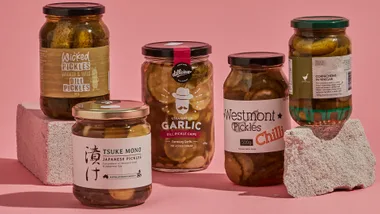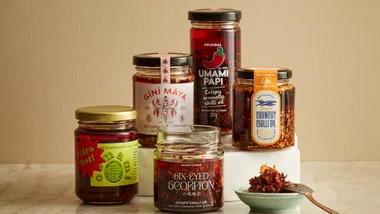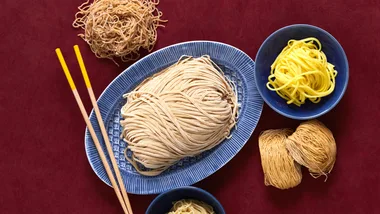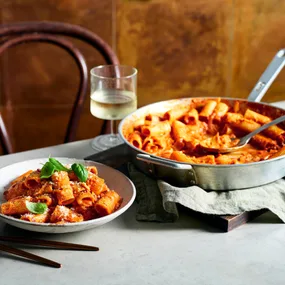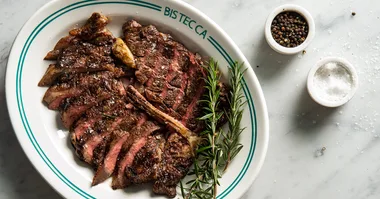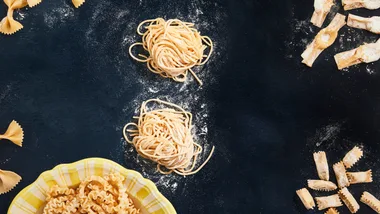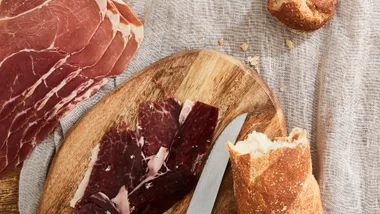Known in Portuguese as pastel de nata or pastel de Belém, these moreish pastries have origins in monasteries but have become world renowned. With iterations found in Brazil, Goa and Macau as a result of Portuguese colonisation, the tarts also crop up in Japanese cuisine as a result of 16th-century trading. The original tart was said to be created by Catholic monks in Lisbon. Egg whites were used in large quantities to starch religious clothing, and the leftover egg yolks make cakes and pastries, like the pastel de Belém.
In this recipe we’ve added honey for a sweet pop, but this can be omitted. The tarts can be served with a dusting of cinnamon over the top too.
Step 1

Step 1
For pastry, beat butter in a bowl of an electric mixer, using the paddle attachment on medium speed until creamy and spreadable. Combine flour and ¼ tsp fine salt in a separate bowl. Pour over 140ml room temperature water, then using a pastry scraper, cut water into flour until a dough forms. Turn dough out onto a well-floured work surface and roll out to a 10cm x 25cm rectangle; cover with a sheet of baking paper; set aside for 15 minutes.
Step 2

Step 2
Continue rolling out pastry rectangle to form a 35cm square. (Lift it occasionally to prevent it sticking. Using an offset palette knife, spread 60g soft butter over bottom half of dough, leaving a 1cm border. Fold unbuttered side of dough over the buttered side, press edges to seal. Repeat process, rolling dough to a 35cm square, spreading with another 60gm butter and folding, then rotate dough 90 degrees. Roll dough out to a 35cm square. Starting at the edge closest to you, work your fingers along the edge, rolling the dough up tightly into an even log shape. Enclose in plastic wrap and refrigerate to firm (4 hours or overnight).
Step 3
Slightly trim ends from pastry log, then cut into 12 equal discs. Place each pastry disc, cut-side up in a 12-hole 80ml (1/3 cup) muffin tin, press the centre of the spiral into the bottom of each cavity and ease pastry up the side and 3mm beyond hole rim. Freeze for at least 30 minutes or until required.
Step 4
For filling, stir sugar, honey, 125ml water, lemon rind and cinnamon quills in a small saucepan over medium heat until sugar dissolves, then simmer until reduced (8 minutes). Pass through a fine sieve and discard solids.
Step 5

Step 5
Place flour in saucepan off the heat. Gradually whisk in milk, followed by cream, vanilla and syrup until smooth. Stir continuously with a flat-bottomed spoon over medium heat until mixture boils and thickens. Remove from heat, whisk in eggs, one at a time, then pass through a fine sieve into a jug. Cover closely with plastic wrap and cool.
Step 6
Place a heavy-based oven tray in oven and preheat to 230°C fan-forced. Pour custard into pastry shells to the top. Place on oven tray; bake until pastry is crisp and custard is set and blackened in spots (20-22 minutes). Stand tin on a wire rack for 10 minutes, before lifting tarts onto a wire rack to cool completely.

 James Moffatt
James Moffatt
